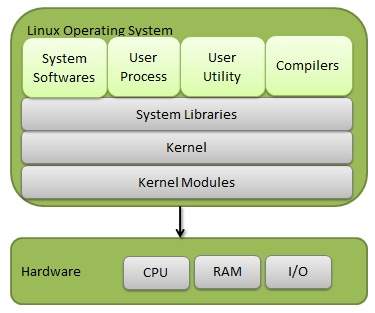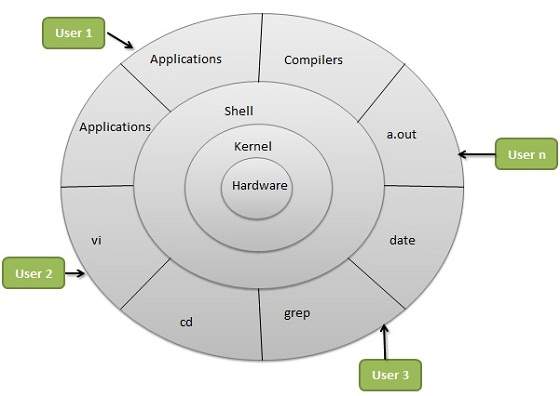Linux
Linux can freely be qualified as an Internet phenomenon. Created as a UNIX-based operating system under the GNU license two decades ago, Linux has set high standards in the release of open-source technologies that master the Internet nowadays. Due to its ground-breaking concept and support by a large community of developers, Linux underwent a truly explosive growth to turn into one of the most widely adopted UNIX-like OSs in the world. The fact that it is used as both a desktop operating system and a server platform makes it accessible to millions of users online.
Linux, Unix and GNU
By combining a lot of key characteristics such as fastness, stability, security and adaptability, Linux has become the most preferred alternative to commercial Unix and Microsoft operating systems. Its proven quality of performance has been given high credits by users and explains why most of the World Wide Web today is built upon the Linux software platform.
Based on the Unix core, originally developed back in the 1960s, Linux retains its modular concept, which makes it very stable and easily customizable. When GNU was initially started as a project in 1985, it aimed to provide a complete Unix-compatible software system. However, until the 1990s, work on the kernel and the drivers were in the initial stage. This motivated Linus Torvalds to create his own kernel in 1991 using the libraries and utilities from the GNU project, laying the foundations of the GNU/Linux project and creating the core of one of the most powerful operating systems.
The Linux kernel
The power of Linux is stemming from the kernel – the operating system code that is aimed at managing the communication between computer hardware and software. Since the Linux kernel is designed to be small and fast, it allows for very efficient management of the basic computer resources such as memory, disk space and CPU power.
The kernel is the driving force of the Linux OS. It handles all processes and defines application behavior. In Linux distributions, the graphic system does not run as a kernel process, which allows for the graphic system to be restarted in the event of a crash, without the need to restart the computer.
Linux advantages
One of the most valued advantages of Linux over the other platforms lies with the high security levels it ensures. Every Linux user is happy to work in a virus-free environment and use the regular virus-prevention time needed when working with other operating systems for other more important tasks.
Thanks to its open-source distribution, Linux is being constantly developed and updated by the constantly expanding community of programmers supporting it. Despite its dynamic nature, it is totally complete in terms of functionality and interface. All those ongoing development efforts are made with the sole purpose of keeping the platform flexible and ever adaptable to the changeable ‘climate’ of the WWW.
Linux in the World Wide Web
Due to its innate stability, the Linux-based distributions are a top choice for Internet servers, with a great part of the World Wide Web being powered by Linux. Linux is often used with Apache, thus creating the stable Linux-Apache combination.
As a fundamental part of the web, Linux has deservedly found its place in the popular LAMP open source web platform, which represents a combination between the most popular website building technologies: Linux, Apache (web server), MySQL (database) and PHP/Perl/Python (web application languages).
Operating System — Linux
Linux is one of popular version of UNIX operating System. It is open source as its source code is freely available. It is free to use. Linux was designed considering UNIX compatibility. Its functionality list is quite similar to that of UNIX.
Components of Linux System
Linux Operating System has primarily three components
- Kernel − Kernel is the core part of Linux. It is responsible for all major activities of this operating system. It consists of various modules and it interacts directly with the underlying hardware. Kernel provides the required abstraction to hide low level hardware details to system or application programs.
- System Library − System libraries are special functions or programs using which application programs or system utilities accesses Kernel’s features. These libraries implement most of the functionalities of the operating system and do not requires kernel module’s code access rights.
- System Utility − System Utility programs are responsible to do specialized, individual level tasks.
Kernel Mode vs User Mode
Kernel component code executes in a special privileged mode called kernel mode with full access to all resources of the computer. This code represents a single process, executes in single address space and do not require any context switch and hence is very efficient and fast. Kernel runs each processes and provides system services to processes, provides protected access to hardware to processes.
Support code which is not required to run in kernel mode is in System Library. User programs and other system programs works in User Mode which has no access to system hardware and kernel code. User programs/ utilities use System libraries to access Kernel functions to get system’s low level tasks.
Basic Features
Following are some of the important features of Linux Operating System.
- Portable − Portability means software can works on different types of hardware in same way. Linux kernel and application programs supports their installation on any kind of hardware platform.
- Open Source − Linux source code is freely available and it is community based development project. Multiple teams work in collaboration to enhance the capability of Linux operating system and it is continuously evolving.
- Multi-User − Linux is a multiuser system means multiple users can access system resources like memory/ ram/ application programs at same time.
- Multiprogramming − Linux is a multiprogramming system means multiple applications can run at same time.
- Hierarchical File System − Linux provides a standard file structure in which system files/ user files are arranged.
- Shell − Linux provides a special interpreter program which can be used to execute commands of the operating system. It can be used to do various types of operations, call application programs. etc.
- Security − Linux provides user security using authentication features like password protection/ controlled access to specific files/ encryption of data.
Architecture
The following illustration shows the architecture of a Linux system −
The architecture of a Linux System consists of the following layers −
- Hardware layer − Hardware consists of all peripheral devices (RAM/ HDD/ CPU etc).
- Kernel − It is the core component of Operating System, interacts directly with hardware, provides low level services to upper layer components.
- Shell − An interface to kernel, hiding complexity of kernel’s functions from users. The shell takes commands from the user and executes kernel’s functions.
- Utilities − Utility programs that provide the user most of the functionalities of an operating systems.

